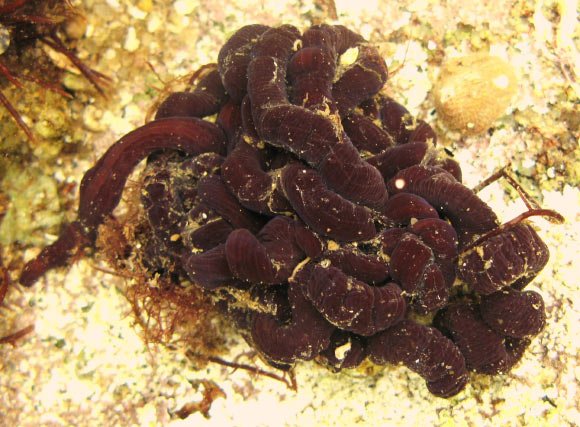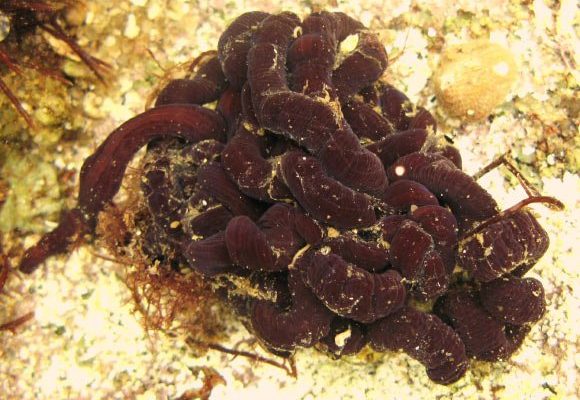
When you dive into the study of marine biodiversity, you’re exploring more than just pretty fish and colorful corals. You’re looking at complex relationships within marine life and how they interact with their environment. Bootlace worms, with their elongated bodies and unique characteristics, serve as essential subjects in these studies, unlocking secrets about ecosystem health and resilience. Let’s journey into the fascinating world of bootlace worms and their role in marine biodiversity!
What Are Bootlace Worms?
Bootlace worms, scientifically known as *Lineus longissimus*, are fascinating creatures that can grow to astonishing lengths—some reports suggest they can reach up to 55 meters! To put that in perspective, that’s longer than a blue whale! You might be wondering why these worms are so long. Well, they’re fascinatingly flexible and can stretch and contract their bodies, making them quite agile in their underwater habitat.
These worms are part of the phylum Nemertea, also known as ribbon worms. They have a distinct anatomy, which includes a long, slender body and a proboscis that can be extended for hunting prey. They primarily live in marine environments, often buried in the ocean floor’s sediment. If you ever encounter one, it might take you by surprise! Their size and appearance can be quite startling, as they can look like a moving piece of seaweed.
The Role of Bootlace Worms in Marine Ecosystems
So, you might be curious about why these worms matter in the grand scheme of marine ecosystems. Bootlace worms play a pivotal role in the food web. They primarily feed on small invertebrates, which helps control populations of these creatures and maintains balance in their environment. By preying on these smaller organisms, bootlace worms contribute to nutrient cycling, which is vital for the health of marine ecosystems.
Moreover, these worms can serve as indicators of environmental health. If scientists notice changes in bootlace worm populations, it could signal shifts in the marine ecosystem. For example, an increase in their numbers might suggest a rise in food availability or a decrease in competition, while a decline could indicate pollution or habitat destruction. Monitoring their populations can give researchers clues about the overall health of marine biodiversity—a fascinating way to gauge the state of our oceans.
Research Techniques for Studying Bootlace Worms
When it comes to studying bootlace worms, scientists employ a variety of research techniques. One common method is sampling. Researchers often collect sediment from marine environments and then sift through it to find these elusive worms. This method allows them to gather data on worm populations and their distribution across different habitats.
Another essential technique is molecular analysis. By examining the genetic material of bootlace worms, scientists can understand their genetic diversity, which is crucial for assessing their adaptability to changing environments. This information helps to clarify how resilient they might be in the face of challenges such as climate change or habitat loss.
In addition to these methods, field studies are vital. Scientists often observe bootlace worms in their natural habitats, documenting their behavior, feeding patterns, and interactions with other species. This holistic approach creates a fuller picture of what role these fascinating creatures play in the marine environment.
Bootlace Worms and Climate Change
Climate change poses a significant threat to marine biodiversity, and bootlace worms are no exception. Changes in ocean temperature, acidification, and rising sea levels can affect their habitats and food sources. For instance, if the ocean warms, it might alter the distribution of invertebrates that bootlace worms rely on for food. This disruption can lead to a decline in worm populations, which could cascade through the food web, affecting other species.
Researchers are increasingly focused on how bootlace worms respond to these environmental stressors. By observing how their behavior and populations change, scientists can glean insights into broader trends in marine ecosystems. This research is crucial for developing conservation strategies to protect marine life from the impacts of climate change.
Conservation Efforts and Challenges
Given their role in marine ecosystems, conserving bootlace worms and their habitats is essential. However, these efforts face challenges. Pollution, overfishing, and habitat destruction from human activities threaten not only bootlace worms but also the entire marine biodiversity. Protecting the coastal and marine environments where these worms thrive is a critical step toward maintaining healthy ecosystems.
Organizations and researchers are working tirelessly on conservation initiatives. Efforts include establishing marine protected areas (MPAs) where activities like fishing and development are restricted, allowing ecosystems to recover and thrive. Public awareness campaigns are also vital, educating communities about the importance of all marine life, including those less glamorous creatures like bootlace worms.
Additionally, ongoing research helps identify regions that are particularly vulnerable and need protection. By focusing on these areas, conservationists can implement specific strategies that target the unique challenges faced by bootlace worms and their habitats.
In summary, studying marine biodiversity, particularly through the lens of bootlace worms, reveals the interconnectedness of life beneath the waves. These unique creatures help us understand the complexities of ocean ecosystems and the impact of environmental changes. By monitoring their populations, scientists can gain insights into the health of our oceans and respond to threats like climate change.
As we learn more about the hidden treasures of the sea, it becomes clear that every species, no matter how strange or overlooked, plays a vital role. Conservation efforts are essential to protect marine biodiversity for future generations, ensuring that the oceans remain a thriving, vibrant ecosystem. So, the next time you think about the ocean, remember the bootlace worms and the crucial part they play in our world. They’re tiny, but their role is mighty!

